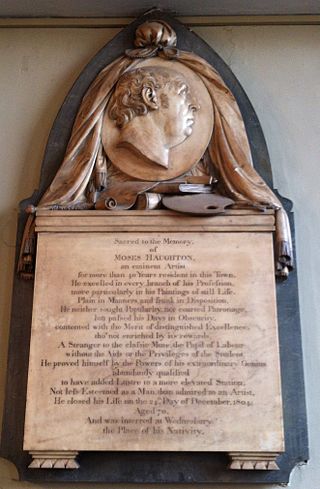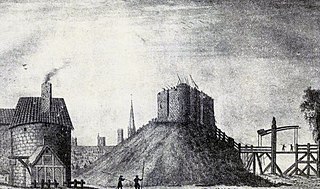Related Research Articles

Sir George Scharf KCB was a British art critic, illustrator, and director of the National Portrait Gallery.

Robert Braithwaite Martineau was an English Victorian painter.
Sir Lionel Henry Cust was a British art historian, courtier and museum director. He was director of the National Portrait Gallery from 1895 to 1909 and co-edited The Burlington Magazine from 1909 to 1919. He was the father of Lionel George Archer Cust.

Sir James Gray, 2nd Baronet was a British diplomat and antiquary.

Moses Haughton, sometimes spelt Horton was a British designer, engraver and painter of portraits and still lifes.

The York Virtuosi were an informal group of antiquarians, artists and natural philosophers who gathered initially around Martin Lister in York between 1670 and 1683.

Francis Place was an English gentleman draughtsman, potter, engraver and printmaker, active mainly in York.

John Henry Middleton was an archaeologist and a museum director.

James Hakewill (1778–1843) was an English architect, best known for his illustrated publications.
Miles Gale (1647–1721) was an English antiquary.
John Henderson (1797–1878) was an English collector of works of art.
Andrew Henderson was a Scottish portrait-painter.

Elisha Kirkall (c.1682–1742) was a prolific English engraver, who made many experiments in printmaking techniques. He was noted for engravings on type metal that could be set up with letterpress for book illustrations, and was also known as a mezzotint artist.
Michael Angelo Hayes, was an Irish watercolourist who specialised in painting horses and military subjects.
Thomas Hargreaves or Hargraves, was an English miniature-painter.

George Harley (1791–1871) was an English water-colour painter and drawing-master.

William Hannan (1725–1772) was a Scottish drawer (artists) and decorative painter.

James Hewlett (1768–1836) was an English flower-painter.

Thomas Alphonso Hayley was an English sculptor.
Thomas Hill (1661–1734) was a British portrait painter.
References
- 1 2 3 4 5 6 Cust, Lionel Henry (1890). "Gyles, Henry". In Stephen, Leslie; Lee, Sidney (eds.). Dictionary of National Biography . Vol. 23. London: Smith, Elder & Co.
- 1 2 3 4 "Henry Gyles Stonehenge". Tate. Retrieved 16 January 2014.
- ↑ "Drawing". British Museum. Retrieved 24 February 2014.